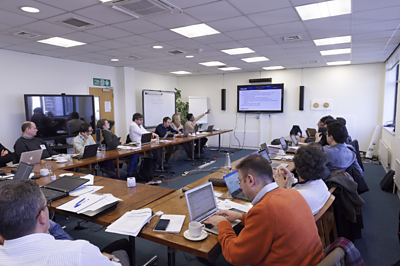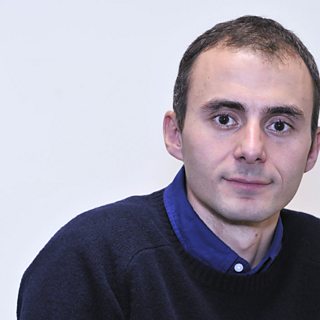
COGNITUS addresses the future of Ultra High Definition (UHD) content production and distribution, with the goal of bringing together experts in video broadcasting, processing and analytics, with the objective of pushing the boundaries of conventional broadcasting architectures. In particular, the action envisages new scenarios in which conventional professionally-produced high quality content in UHD format is enhanced and aggregated with user generated content (UGC) allowing the creation of a converged stream of high quality media. By exploiting the ubiquity of UGC from unconventional content sources such as smartphones or portable cameras, with the knowledge and resources of broadcast professionals, COGNITUS aims at demonstrating new ways to distribute content and bring innovative experiences to the public.
On one side, technology related to the UHD format has progressed at an incredibly fast pace since the first experiments in early 2000s. In August 2012, was released including the parameters for UHD TV. Recommendation BT.2020 specifies spatial resolutions of 3840Ă2160 pixels/frame, which is four times the size of conventional âfull HDâ resolution (1920Ă1080). While BT.2020 defines the parameters of UHD TV services from the signal perspective, other organisations such as (DVB) and (EBU) have been working towards the definition of the parameters needed by applications which make use of UHD content. The DVB has recently ratified the parameters for the delivery of UHD services using the (HEVC) standard: spatial resolution of 3840Ă2160, maximum bit depth of 10âbit, temporal resolution up to 60 fps, BT.709 colourimetry. Given the volume of data associated with UHD signals, efficient video compression technology is required. The ITU Video Coding Experts Group (VCEG) and ISO Moving Picture Experts Group (MPEG) joined efforts to tackle this problem, developing the innovative HEVC video compression standard. was finalised in January 2013 and proved to outperform its predecessor Advanced Video Coding (AVC) by providing up to for the same perceived quality. Given the superior performance, HEVC is the compression technology of choice in the deployment of UHD services.

On the other side, the widespread availability of smartphones and other connected portable devices means access to potentially endless amount of unconventional content captured from different perspectives, which may be otherwise inaccessible to professional content producers. The impact and availability of UGC has drastically increased in the past years, and it is nowadays one of the dominant forms of online information, providing enormous potential for content production and distribution.

The COGNITUS partners envisage that the project will result in a proof of concept to demonstrate the power of social creativity in a synergistic multimedia production approach, by means of demonstrations at real-life large events such as big sport events or music concerts. Discussions during the kick-off meeting in London mainly focused on starting activities towards the definition of compelling use cases, to efficiently demonstrate the potential of such approach. These use cases are just some examples of the fascinating and potentially unlimited new services that could be unleashed by the confluence of UHD broadcasting technology and UGC brought by COGNITUS.
The COGNITUS project has received funding from the European Unionâs Horizon 2020 research and innovation programme under grant agreement No 687605.


